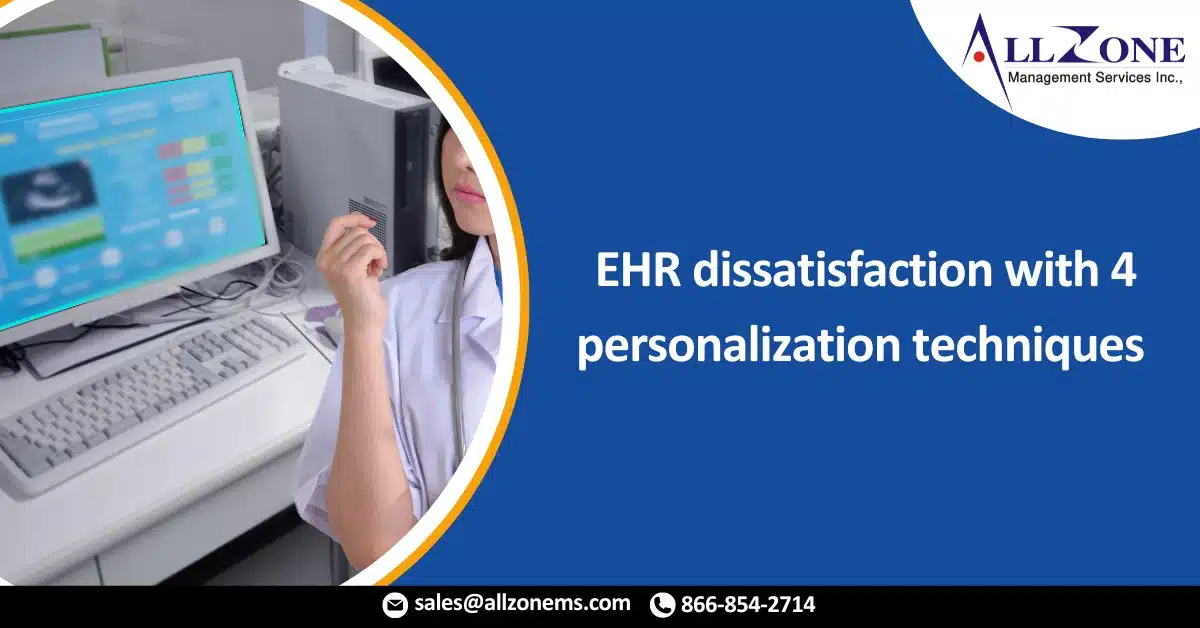Personalizing your EHR is a proven best practice for new implementations and major system upgrades. These four new approaches boost physician satisfaction and improve EHR usability.
When EHRs first emerged 20 years ago, system vendors pushed for standardization. Consistency was considered the only pragmatic way to support end users and enterprise-wide systems. EHR customization and personalization were frowned upon as too expensive and difficult to maintain. Two decades later this EHR philosophy has changed.
Today’s healthcare organizations and industry experts agree that EHR personalization improves the end-user experience. Personalization has become industry best practice and is commonly undertaken for all major system implementations and upgrades. In fact, KLAS Research calls EHR personalization the “yellow brick road that leads to higher EHR satisfaction” in the 2018 report, Improving the EHR Experience through Personalization.
In the same 2018 report, KLAS Research states that any personalization has immediate impact, but three specific areas are most valuable: layouts, templates and filters. Personalization is usually the last phase in clinician training and end-user activation. But it is the most important step to reduce physician dissatisfaction and improve usability with EHRs. This article introduces four new best practices to include in an organization’s EHR personalization process.
EHR Personalization Pivots
According to the 2021 Physician Sentiment Index Report conducted by athenahealth, 23 percent of physicians went through a major technological transition in the past 24 months, including EHR implementations. The survey was fielded between October and December 2020, during the peak of the Covid-19 pandemic. The pandemic, industry consolidation and layoffs/furloughs added to the frustration of technological change for our nation’s physicians.
For organizations that decided to move forward with implementations and major upgrades during that time, remote and virtual EHR personalization became a necessity. Specific focus was given to personalizing documentation templates, order sets and preference lists by medical specialty. Cued by Covid-19, the following four personalization pivots made during the pandemic will remain with us for the foreseeable future and become standard practice going forward.
Shift #1: Go virtual
Virtual one-on-one personalization labs are a Covid-19 pivot that the industry will keep. Due to flexibility, online access and privacy, virtual labs make learning new EHR systems and modules easier for busy clinicians. The same EHR personalization lab toolkits used during onsite, group training sessions can be used for these one-on-one virtual sessions.
Clinicians attend personalization labs on their own time and whenever it fit their schedules, including from home offices.
Providers interact with specialty-based trainers via screen sharing, live chat and online video.
Labs are conducted in private. This encourages clinicians to ask more questions, remain fully engaged and receive highly customized training.
Shift #2: Personalize by specialty
It has long been known that EHRs fail to meet physicians’ expectations because they are not tailored by specialty. This extends to EHR training and personalization. By conducting one-on-one virtual personalization labs by specialty, sessions become more time effective and clinician appropriate. A higher level of customization makes providers feel more connected to the new system and increases long-term adoption.
For example, hierarchical condition categories can be removed from EHR templates used by pediatricians. Personalization lab trainers can be assigned by specialty, such as obstetrics nurses for all members of the OB/GYN department. And different content, filters and layouts can be applied.
Shift #3: Pick the perfect time
The optimal time for EHR personalization labs is both before and during system go-live. Conducting personalization labs before go-live introduces clinicians to the new system or module setup, and also delivers valuable input on needs and requirements for the EHR training team. Analytics derived from personalization labs are used to identify the end users and specialties that may need the most help during go-live.
Personalization during the actual system go-live period helps clinicians determine what they really need. What clinicians think they need before go-live does not always play out in practice as they see how the system works with real-world cases.
Shift #4: Revisit in three months
Three months is the recommended period to evaluate what is working and fine-tune layouts, templates and filters to improve usability. This time frame also provides enough EHR data to assess specific EHR workflows. For example, data should show the number of clicks each clinician takes to perform a particular set of tasks within each module of the EHR. Armed with this data, staff can assess more efficient ways to structure the documentation templates, order sets or preference lists.
A Path Toward Excellence
Time spent on EHR personalization pays off in the long run. Organizations achieve better returns on their EHR investments and clinicians report higher levels of satisfaction and usability. The updated best practices presented in this article expand the value of EHR personalization efforts exponentially. If your organization has not revisited EHR personalization post pandemic, now is the time to do so.
For More Information: battling ehr dissatisfaction with 4 personalization techniques

